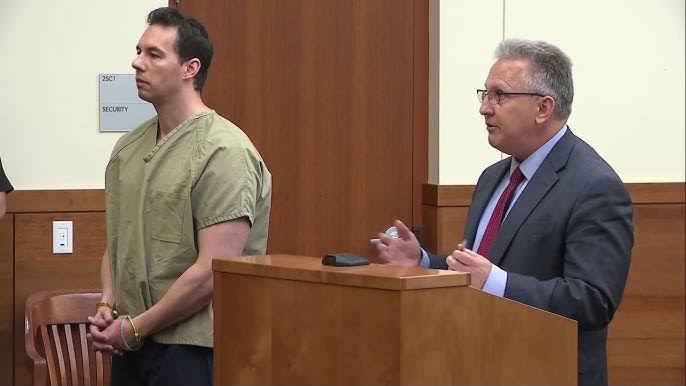
What is Medical Negligence?
Medical negligence occurs when a healthcare provider fails to adhere to the recognized standard of care, resulting in preventable harm to a patient. This involves demonstrating that the provider’s actions or inactions deviated from what another reasonably prudent medical professional would have done under similar circumstances, and that this breach directly caused injury or harm to the patient.
Examples of Medical Negligence
Medical negligence can manifest in various forms, including but not limited to:
- Diagnosis errors (failure to diagnose, misdiagnosis, delayed diagnosis)
- Medication errors (wrong dosage, incorrect medication)
- Surgical errors (wrong-site surgery)
- Anesthesia mistakes
- Failure to inform patients about known risks associated with treatments
- Birth injuries due to improper prenatal care
Criteria for Negligence
To establish negligence against a doctor, certain criteria must be met. The legal framework for medical negligence typically revolves around the “Four D’s” of medical malpractice: Duty, Deviation, Damages, and Direct Causation. Each of these elements must be proven to establish a case of negligence.
- Duty: The first criterion is the existence of a duty of care. This means that the doctor had a legal obligation to provide care to the patient. A doctor-patient relationship must be established, indicating that the doctor was responsible for the patient’s health and well-being.
- Deviation: The second criterion involves deviation from the standard of care. This means that the doctor failed to act in accordance with the accepted practices and procedures that other competent medical professionals would follow under similar circumstances. Examples include misdiagnosis, surgical errors, or failure to obtain informed consent.
- Damages: The third criterion requires proof of damages resulting from the doctor’s actions or omissions. This can include physical injuries, emotional distress, or financial losses incurred due to additional medical treatment required as a result of the negligent act.
- Direct Causation: Finally, there must be a direct causal link between the doctor’s deviation from standard care and the damages suffered by the patient. It must be shown that if not for the doctor’s negligence, the patient would not have experienced harm.
In summary, to successfully claim medical negligence against a doctor, one must demonstrate that there was a duty owed by the doctor to the patient, that this duty was breached through deviation from accepted standards of care, that damages occurred as a result of this breach, and that there is a direct causative link between them.
Defenses Available in Medical Negligence Cases
In the context of medical negligence, healthcare providers may employ several defenses to mitigate or eliminate liability when faced with claims of malpractice. Understanding these defenses is crucial for both patients and practitioners. Below are the main defenses available in cases of medical negligence:
1. Standard of Care Defense
One of the primary defenses in medical negligence cases is demonstrating that the healthcare provider met the accepted standard of care. The standard of care refers to the level and type of care that a reasonably competent healthcare professional would provide under similar circumstances. If a defendant can show that their actions were consistent with this standard, they may not be found negligent.
2. Informed Consent Defense
Healthcare providers have a duty to obtain informed consent from patients before proceeding with treatment or procedures. If a patient was adequately informed about the risks, benefits, and alternatives to a proposed treatment and still chose to proceed, the provider may argue that they cannot be held liable for any adverse outcomes resulting from that treatment.
3. Contributory Negligence
Contributory negligence occurs when a patient’s own actions contribute to their injury or harm. In jurisdictions that recognize this defense, if it can be shown that the patient failed to follow medical advice or acted recklessly, this may reduce or eliminate the provider’s liability.
4. Comparative Negligence
Similar to contributory negligence, comparative negligence allows for damages to be apportioned based on each party’s degree of fault. If a patient is found partially responsible for their injuries, any compensation awarded may be reduced by their percentage of fault.
5. Error in Judgment Defense
Healthcare professionals often face complex situations where multiple treatment options exist, and choosing one over another can lead to different outcomes. If a provider can demonstrate that their decision was reasonable given the circumstances and within acceptable medical practice standards, they may successfully defend against claims of negligence based on an error in judgment.
6. Statute of Limitations
Medical malpractice claims are subject to statutes of limitations, which set time limits on how long a patient has to file a lawsuit after an alleged act of negligence occurs. If a claim is filed after this period has expired, the healthcare provider can use this as a defense against liability.
7. Res Ipsa Loquitur
This legal doctrine applies when an injury is so severe or unusual that it implies negligence occurred without needing extensive evidence to prove it directly. In such cases, if it can be established that the injury would not typically happen without negligent conduct by the healthcare provider, they may be held liable.
8. Good Samaritan Law Defense
In some jurisdictions, Good Samaritan laws protect healthcare providers from liability when they voluntarily assist patients in emergency situations outside their usual practice setting. This defense applies only if the assistance provided was reasonable and intended to help.
By employing these defenses strategically during litigation, healthcare providers aim to protect themselves from claims arising out of alleged medical negligence.
Preventing Medical Negligence Claims: A Comprehensive Approach for Practitioners
Medical practitioners can take several proactive measures to minimize the risk of being taken to court for medical negligence. These measures encompass effective communication, thorough documentation, adherence to legal and ethical standards, and maintaining a patient-centered approach.
1. Informed Consent
One of the foundational elements in preventing medical negligence claims is obtaining informed consent from patients. This process involves:
- Comprehensive Explanation: Practitioners should clearly explain the proposed medical procedure, including all potential risks and complications, alternative treatments, and consequences of not undergoing treatment.
- Understanding Patient’s Perspective: It is crucial that this information is conveyed in a language that the patient or their legal guardian understands. This ensures that they are fully aware of what they are consenting to.
- Documentation of Consent: Having a signed consent form that details the discussion can serve as evidence that the patient was adequately informed.
2. Effective Communication
Building a strong rapport with patients and their families can significantly reduce the likelihood of litigation:
- Empathy and Compassion: Spending time during consultations to listen to patients’ concerns fosters trust and understanding. Patients who feel heard are less likely to pursue legal action if outcomes are not as expected.
- Counseling Sessions: Conducting detailed discussions in a private setting with witnesses present can help ensure transparency and prevent claims of coercion.
3. Thorough Documentation
Accurate and meticulous documentation is critical in defending against negligence claims:
- Maintain Detailed Records: Every interaction with a patient should be documented comprehensively, including notes on diagnosis, treatment plans, and any communications regarding consent.
- Consistency in Documentation: All entries should be made by one person using clear handwriting or typed formats to avoid allegations of tampering or fabrication.
- Legibility: Ensuring that all records are legible helps maintain professionalism and reduces misunderstandings.
4. Adherence to Standards of Care
Practitioners must stay updated on best practices within their field:
- Continuous Education: Regularly attending workshops, conferences, and training sessions helps practitioners remain informed about new developments in medicine.
- Peer Reviews and Audits: Engaging in peer reviews can provide insights into areas for improvement while ensuring adherence to established standards.
5. Financial Transparency
Being upfront about costs associated with procedures can also mitigate disputes:
- Clear Communication About Fees: Disclosing likely expenses before treatment helps manage patient expectations and reduces misunderstandings regarding billing.
- Emergency Treatment Protocols: Providing care regardless of a patient’s ability to pay demonstrates commitment to patient welfare while protecting against claims related to refusal of service.
6. Legal Preparedness
Understanding the legal landscape surrounding medical practice is essential:
- Familiarity with Medical Laws: Practitioners should be well-acquainted with laws governing medical practice in their jurisdiction.
- Legal Counsel Consultation: Regular consultations with legal experts specializing in healthcare law can help practitioners navigate complex issues related to malpractice.
By implementing these strategies, medical practitioners can create an environment that prioritizes patient safety while minimizing the risk of litigation due to negligence.







